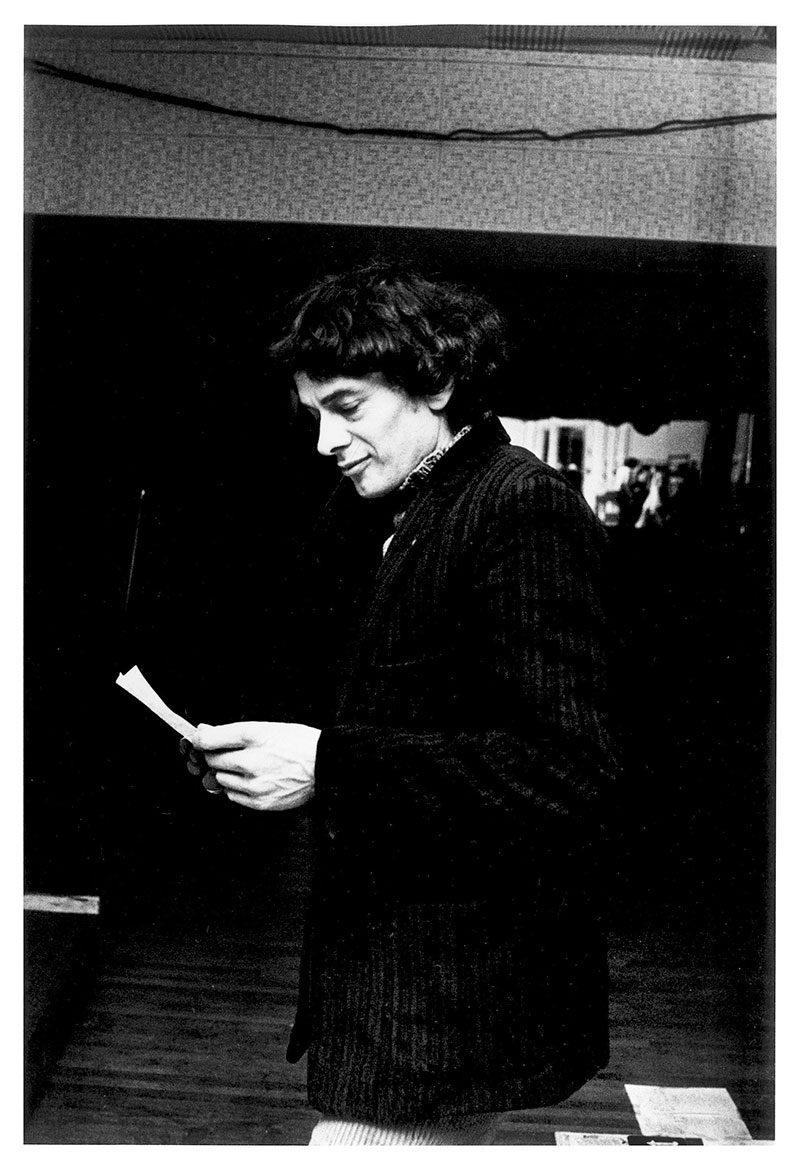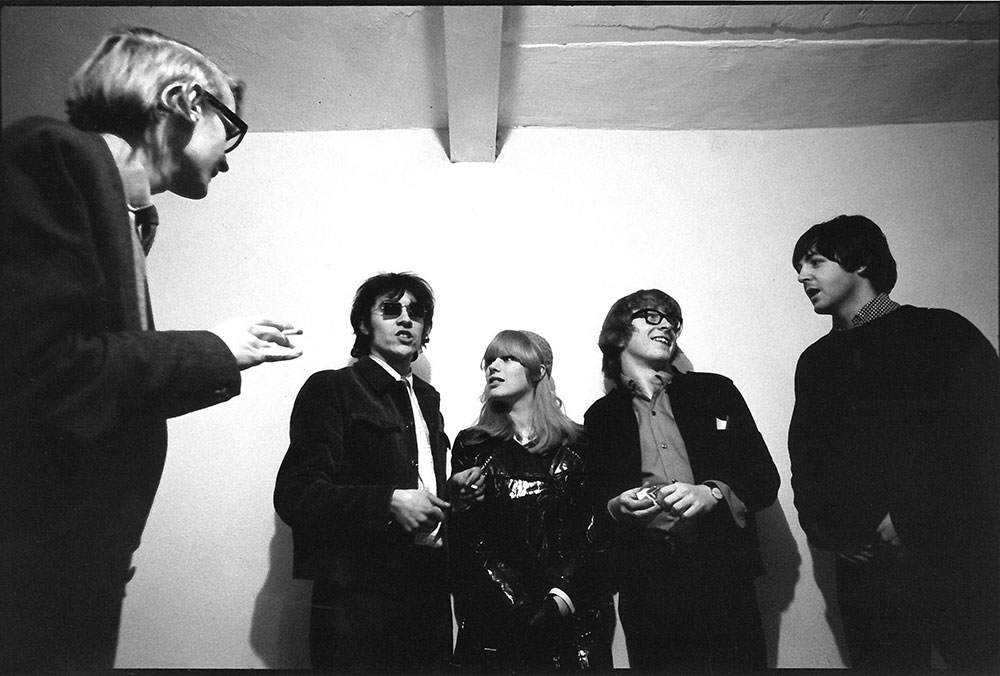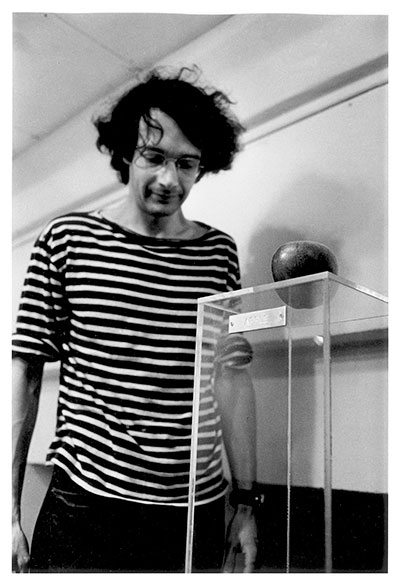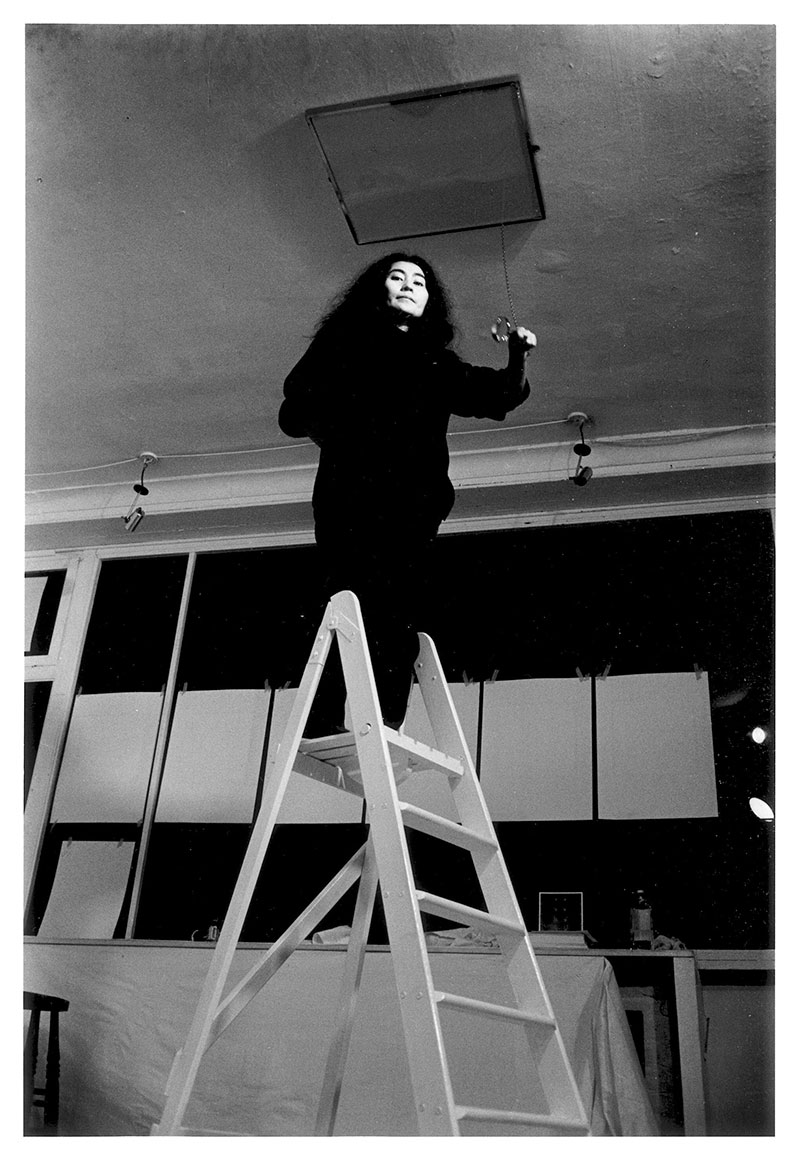
Between 1968-1970 photographer Graham Keen became, at the invitation of John ‘Hoppy’ Hopkins, art editor for International Times, which was published for the first time in 1966. He contributed photographs and was later to be art director for issues 29-70. When the magazine was raided by police, Keen and three other directors were sent for trial, and found guilty of Conspiracy to Corrupt Public Morals. Keen went on to found Cyclops Magazine.
In October 2016, the Lucy Bell Fine Art Photography Gallery in St Leonards on-Sea mounted 1966 And All That, a retrospective exhibition of Graham’s work. The show featured many of the leading lights of the counter cultural movement of the era, including Hoppy, Barry Miles, Tony Cox, Yoko Ono, Vanessa Redgrave, Joan Baez and a young Marc Bolan. Graham’s photographs of Ono’s Ceiling Work as well as her Film No. 4, (aka Bottoms), made with her husband at the time, Anthony Cox, are unique records of her early works.
Keith Rodway is creative director Trash Cannes Festival in Hastings. He and Lucy Bell went to Graham’s house in Battle to catch up on his memories of key moments in IT’s founding years.
KR: So what I’d like to ask you…..we keep returning to this period 1966, this whole mid-sixties thing. There’s your show at Lucy’s gallery, there’s the show at the V&A, there’s a lot of talk always about the sixties, we keep going back to the sixties as being this kind of ideal period. What was it that you experienced? Why d’you think we keep going back to that?
GK: I’ve no idea! I mean at the time……this is the thing that people ask a lot…… at the time it was just every day business, you know, you woke up in the morning, you had your breakfast, you had a few things to do, there was no awareness of this year as being out of the ordinary. It’s just, years flow past, a kind of progression. That’s not what you wanted to hear.
KR: No that’s fine. I’m very comfortable with the idea that it was just daily life.
GK: Yeah.
KR: And you just did what you did and it’s probably the historians who are attaching this importance to it. Why d’you think it all dissolved?
GK: Why do I think…..?
KR: Why couldn’t it be sustained?
GK: I’ve no idea.
KR: The productivity, it was a very productive time wasn’t it?
GK: It was a very active time on certain levels. But my brother who is a little bit older than me, he was a primary school teacher, went through the same period and he said “I don’t know what people are making a fuss about”.
You went to work, life went on, this is tiny but influential part of culture. Not world events.
KR: It’s not the whole story either is it?
GK: No
KR: How did you get involved with……how did you become a photographer?
GK: Well I was always interested in the visual aspect. I had an art school training. Taught me to see and to look. I was interested in photography but it all seemed to be terribly expensive, you took your photographs, you took it to the chemist and it came back, you stuck it in an album. But on a trip to Moscow I met a guy who wanted to be a photographer and he had the kind of enthusiasm that went with it, with him in particular. We’re talking about John Hopkins. I was inspired by…and when I got a job, I was teaching and I had enough money to save up for a camera. Hoppy told me “oh get a Pentax, they’re good”. And I bought one and I took photographs of school activities in a classroom, playground and so on. And he said “try selling them to the educational press” – which I did. And one month I made more doing that than I did at teaching so I put my notice in. I mean it didn’t seem like a big step really. I was also using Hoppy’s dark room at the weekends. He’d become by that time quite a successful photo-journalist. He was working for the Sunday Times.
 John ‘Hoppy’ Hopkins
John ‘Hoppy’ Hopkins
KR: How did you meet Hoppy?
GK: On a trip to Moscow. Some of us in Cheltenham got together, bought a hearse, 1936 Austin 8, V8 – lovely engine. But at the time the clutch slipped a bit. Two of the group were card carrying Communist Party members. And we got together a group that wasn’t economically viable to get us to Moscow so we advertised for other people and a friend of ours put up a notice in one of the Oxford colleges. And Hoppy, who’d been at Cambridge but was shagging somebody at Oxford, saw it and decided he’d like to come along. And I can see him now; we picked him up on the Old Kent Road and he was there with a battered Trilby and a holdall, ready to go. I thought he was a gypsy, so did several other people. Anyway, that’s how I met him.
KR: And what was your purpose for going? Did you just go to Moscow? Did you want to meet someone?
GK: No. There were eleven of us altogether by the end, crammed into this Hearse. No it was a bit of a laugh really.
LB: I wanted you ask you – who organized the Hearse?
GK: A guy called Colin Parker, and Harry Brampton, both at the art college and myself, we were the prime movers. We spent ages stripping down the engine, cleaning it, putting new piston rings in, yep – good times.
LB: So you drove, you drove to Moscow through…..
GK: We applied to the A.A because they’d give you maps and street plans. You know, you’d submit your journey to them and they would send you back this huge wad of stuff with street plans, one-way systems and everything. And we had this great wad come back and it took you right through to the border of Germany and Poland which was probably about half the distance. And then there was a small map and it said “Warsaw……Smolensk…..Moscow” and it had this long road running through, nothing else!
KR: And were you politically motivated personally?
GK: No…well, you mean was I a Communist fellow traveller?
KR: Kind of, did you have any sympathy with it or did you just wanna go to Moscow in a Hearse?
GK: I just wanted to go to Moscow in a hearse.
KR: That’s great!
GK: We were all fairly left-wing but I don’t think any of us had any illusions about Communist rule. I mean the card carrying Communists with us weren’t particularly avid. Anyway, that’s how I met Hoppy.
KR: And then you went to…..did Hoppy invite you to IT or was it a coincidence you both ended up there together?
GK: Well that was a long time later. Six years later. I’d come back from Cambodia and I’d gone down to see IT, I’d gone down to see Hoppy…or (Barry) Miles , and Miles took me out to lunch and said “would you like to lay out IT?” and I said “yes”. This is in 1968 mind you, not 1966, and I was fed up with what I’d experienced in Cambodia and I said “Yes, I’d like to”.

KR: Can I just ask you what you were doing in Cambodia? Sorry to interrupt you.
GK: Yes, I’d gone with a peace group. Loosely centred around Peace News. We were trying to get to Hanoi to show some sort of solidarity with the North Vietnamese struggle.
KR: So you came back from Cambodia and you became part of IT?
GK: Yep.
KR: You became lay-out art director.
GK: We called it art editor.
KR: Art editor, ok. And then at some point it all kicked off with the cops and this whole thing about disseminating information about homosexuality and blah blah…
GK: Two years later, yep. They had a guy doing the lay-outs on IT who took a lot of acid and it took him three weeks to get a magazine together and it was a fortnightly. So it was a bit of a mess by that time.
And when I joined IT the editor at the time was losing interest, then IT went bankrupt.
KR: Was that Bill Levy who lost interest?
GK: Yeah that’s right. IT went bankrupt, myself, the editor, who by this time was Peter Stansill and a business manager – we took it over as directors and formed a new company. We borrowed £200 from John Lennon and we paid him back.
KR: Wow, brilliant. That’s great!
KR: What was the name of the other man? Peter Stansill?
GK: Yeah.
LB: There’s a picture of him at the gallery.
GK: I think he’s got a website. He lives in Portland in Oregon.
KR: And who was the acid head who was taking three weeks to do a two week job, can you remember?
GK: I can’t remember. He was an American. They gave him a ticket to Amsterdam and he never came back. (background laughs). Well I think he tried to come back but by that time he was a persona non grata with the British authorities.
KR: I see, OK. So you borrowed money off John Lennon, you paid him back, you set up your company and then what happened?
GK: We brought out the magazine regularly and it sold well. I can’t remember the figures, I’m thinking something like twenty thousand copies. And of course because it gained…um …people realized that we were serious about producing it and the advertising grew because of it. A lot of music ads. We had an advert for “Walk On Gilded Splinters” by a black singer.
KR: Marsha Hunt.
GK: Marsha Hunt, that’s right. And the guy that used to help me out did this big page ad and he emphasized the initial letters of the words of the song.
KR: WOGS. Yeah it’s unfortunate isn’t it?
GK: Awful. You’ve heard about that one?
KR: Well I was going to do a cover version of Walk On Gilded Splinters, I’m in a band, and I just typed in the letters and thought I’ll just do this quickly, and Oh God!
GK: (laughs)
KR: I hadn’t realized that you actually had an advertisement with the…..oh dear!
GK: Neither had she, obviously. Anyway.
KR: Well it was a Dr.John song, he wouldn’t have written a song that particularly wanted…anyway…OK. So how did it all fall apart?
GK: Well it was over the trial really. I mean it did wear us all out. And the three of us decided we’d had enough and left it in somebody else’s hands.
KR: So this was you, Peter Stansill, and Hoppy?
GK: Hoppy? No Hoppy by this time had started some video thing – we hardly saw him. And what was his name? Hall, I’m trying to think of his Christian name…anyway it’ll come.
LB: Not Peter Hall?
GK: No. It’s in the mags anyway. Dave Hall.
KR: And then you had the interest from the police because of this homosexuality thing which presumably was just an excuse to hammer you?
GK: Probably, yeah. I mean we disastrously got the age of consent wrong.
KR: Right, OK.
GK: It was, what was it for heterosexuals?
KR: I think [for gays] it was 21 when it was first legalized wasn’t it?
GK: For homosex…bleurgh…for gays…it was 21.
LB: Everyone thought it was 18 because that was the normal age for consent wasn’t it?
KR: No it was 21 for gays.
LB: That sounds right.
GK: I don’t know, sounds a bit high. I would have thought 16.
LB: Well maybe that’s now.
GK: Anyway, that was the crux.
LB: Maybe it’s changed since then.
GK: But they tried…we were arrested for two things, one was conspiracy to outrage public decency and the other was conspiracy to corrupt public morals. Anyway, the first one was thrown out because there was nothing on the cover to outrage public decency, there were no graphics so they threw that charge out but they indicted us on the other one.
 Antony Cox, Indica Gallery 1966 and “that” apple.
Antony Cox, Indica Gallery 1966 and “that” apple.
The beginning of Apple Records. A pivotal photograph.
KR: So was the magazine closed down with the paper shut?
GK: No. We handed it over to Mickey Farren (Mick Farren, journalist, activist, frontman for British garage rock band the Social Deviants, later the Deviants). I mean part of the ethos was…..it wasn’t our magazine anyway, it belonged to the underground or what have you. There wasn’t any kind of entrepreneurial attitude; you know we weren’t out to make a fortune. Not like Tony (Elliot, founder of Time Out) who was out to make a business of Time Out. I mean for us it was one of those things you did for a bit and then moved on.
KR: Yeah quite, I think that’s still the case really. And did it take itself seriously? Was it a serious political newspaper or was it simply just an excuse to have fun and stir things up?
GK: Well it was both really, I mean we had things we were concerned with. For me it was fun because I didn’t have to choose any of the political arguments or anything, I just slapped the stuff down which is what I really enjoyed doing – using my hands….and the eye.
KR: And how did you and IT part company?
GK:: I’m not sure….we just left.
KR: You just moved on. What did you do straight afterwards? How did you spend the 1970s?
GK: I tried to start a comic paper, which considering I was depressed was probably not the best thing. It lasted four issues…and then I didn’t really know what I was going to do but I got a phone call from an old friend, this must have been about six months after the trial, and he was setting up a maths project under funding from the department of education. And he was going to produce mathematical kits for secondary schools as an experiment. And he asked me if I’d oversee the artistic thing. Down in Exeter I met Michael Gibbs a sound and concrete poet and met the Fluxus people.
KR: Who was that?
GK: His name was Peter Kaner. Margaret Thatcher was education minister at the time and she stopped all the school milk, d’you remember?
KR: I do.
LB: Oh yeah I remember that.
KR: And she invented inflated ice-cream, Mr Whippy.
GK:: Oh God – ha ha!
KR: That was her technique.
LB: Did she? Really?
KR: She developed the technology to pump a small amount of milk with air and make fluffed up ice-cream.
GK: How amazing, she was a chemist.
KR: Yeah she was, a research chemist yeah.
LB: Can I ask a question?
KR: Of course you can.
LB: Just one. When they launched IT at The Roundhouse I think you were there weren’t you?
GK: Yeah.
LB: How come you were there? Was that because you already knew Hoppy?
GK: Yes and Miles.
LB: And Miles. And did you take pictures of it?
GK: Yes.
LB: And you took quite a few pictures I think at The Roundhouse of some of the happenings. What that just coz you were going there for…before you worked for IT wasn’t it?
GK: Well I was in that kind of circle. I’d know it was going on and so on.
LB: So you always had your camera with you?
GK: Yeah. Well I thought there might be a few bob in it, I mean I was a poor, working stiff. If you got a photograph in the Dailies or magazines, the national union of journalists’ rate for that would be two pounds ten shillings. Now, that paid half my rent so I only needed to do about four jobs a week.
LB: Fantastic, yeah.
KR: That’s great isn’t it?
LB: You don’t get paid that much these days.
GK: I don’t know, I’m getting £300 for a pic these days.
LB: Oh good!
KR: Can I just ask you, I know this is a really obvious question but it does interest me, how you think digital technology has changed photography?
GK: Hoppy said to me “Oh thank Christ” he said “We don’t have to go into the dark room anymore”. So that was basically our attitude. We’re not talking about fine art prints here, we’re talking about the nitty-gritty of selling a photograph to a magazine or a newspaper. So easy, you know, once you got your stuff downloaded into the system where you can send the photograph to somebody, just like that. I mean over the past six months there’s been that exhibition in Monaco and that photograph in the catalogue. There’s been Yoko Ono stuff.
 Yoko Ono at the Indica Gallery
Yoko Ono at the Indica Gallery
LB: You’ve got a good archive, coz we were talking about a book weren’t we? He’s going to see the PR lady at The Roundhouse but it’s not ’till the end of October.
GK: Right, yeah.
LB: The timing’s a bit off.
GK: I’ve got a photograph on the wall outside – there’s a ramp at The Roundhouse isn’t there? And there’s a kind of curved walkway with photographs. Or have they changed that?
KR: I don’t know, it’s changed a lot in the last few years because it’s become a professional music venue with all that that implies and I think their link with the past is more conceptual than actual and I don’t think they feel any connection with it, it just happens to be the same building.
GK: No. This was some walkway around the building, I think it had a covering but the rest of it was open to the skies. And they had a number of photographs and they had one of I took of Mike Lesser swimming naked in jelly.
 Mike Lesser rolls naked in jelly
Mike Lesser rolls naked in jelly
LB: That I love, in the nude.
GK: I’d love to know if it’s still there.
KR: I’m going to go there so I can tell you.
GK: Have a look around.
KR: That was very interesting.
LB: Very interesting.
[Tape stops, then starts again with a conversation about Mike Lesser, late lamented mathematical philosopher and IT publisher]
GK: I took my first acid trip at Mike Lesser’s place in Tonbridge. Well I must say, looking back, that Mike was caring coz I didn’t know what I was into but I didn’t feel then that it was an unsafe environment. It’s interesting. That must have been ’68.
KR: He worked for NASA.
GK: Right. Ha ha.
KR: He was working on these kind of heavy duty projects at NASA, I mean stuff I couldn’t begin to understand. But I think because of the autism he just had the mindset to understand all this stuff, you know, which……I didn’t get ‘O’ level maths.
GK: Well when I read Heathcote’s (Williams) poem I began to realize what I didn’t know about Mike.
KR: Yeah, there was a lot, I think, that people didn’t know. I think a lot of people, like your wife, were intimidated by him or put off by him and didn’t really follow it up and somehow I managed not to fall out with him so I actually got to know him tolerably well, as well as you can in a couple of years.
GK: Yeah, it’s good.
KR: Yeah it was good, I’m glad I did.
LB: So is it his son that is now running IT?
KR: Nephew. His sister’s boy, the one I was at school with. I was telling GK that I was told Nick had died of a heroin overdose so I forgot about him for about thirty five years. And when I got put on the list at IT, all of a sudden there was his name, I thought – no it can’t be him – but obviously it was.
LB: So he wasn’t dead.
KR: He wasn’t dead no.
GK: Is IT being run as any kind of commercial thing?
KR: No.
GK: Good.
KR: We don’t have a base, we don’t have an office. I was telling Lucy – the person who lays it out lives in Newcastle, the poetry editor lives in Liskeard in Cornwall, the rest are sort of scattered ’round the country. One of them lives in Italy so it’s because of the internet, that’s the place where we all meet and collaborate.
GK: Yeah, that’s excellent. Peter Stansill is coming over sometime between now and Xmas.
KR: Is he? Oh that’s interesting.
GK: Shall I put you in touch with him?
KR: If you wouldn’t mind that would be great thank you.
GK: So what’s your position vis-a-vis IT?
KR: It’s a bit loosely defined; I occasionally submit an article but more recently I’ve been going out and about with a journalist friend and making films of interviews with people like Steve Hackett from Genesis, Alan Moore we’ve just done a long interview with and we’re interviewing a guy called Youth, who is a music producer who’s worked with Paul McCartney and various other people. So building a library of films of interviews with people we admire on the, broadly the counter culture.
So it’s sort of mining the history rather than the stuff that’s being done now but it’s very hard to tell, who are the activists now, who is actually out there doing stuff. Is it Momentum? You know, who is it?
GK: No, I’m sort of so far removed from that scene. Have you come across Friends Magazine?
KR: No.
GK: It started off as Friends of Rolling Stone and it was supposed to be an English Rolling Stone. I think it started up around ’68 and lasted for a while. It was run by a guy called Alan Marcuson who then turned to selling carpets and I came across his name this week on an advert in…..I think it was either The British Museum magazine or The National Gallery magazine. But he ran the paper and Pearce Marchbank designed it. You haven’t heard of Pearce Marchbank?
KR: Yes.
GK: Ah, he was a genius designer sometime in the late sixties at the Central school.
LB: Keith has also got funding to run, it’s called The Trash Cannes Film Festival in Hastings.
GK: Yeah he was just telling me. I would come down and see some of that.
LB: You could do a film about Graham!
GK: What?! I’m not sure about that.
Images ©Graham Keen 2016, used with the artist’s consent.

I’d love to get in contact with Graham – we were at primary school and then grammar school together. I spent five years in the Air Force and then taught for almost forty years, most in Africa and two years in Chile – while Allende was president.
Comment by George Yiend on 28 March, 2017 at 12:48 pmWrote for theatre, both stage and radio, acted and directed winning awards in all aspects. Now back in England, missing Africa greatly and painting African wild life – won awards for that too.
My interest in Graham now was sparked by seeing photos of us at St Johns Primary School in 1948 on Facebook – the school’s 150th anniversary.